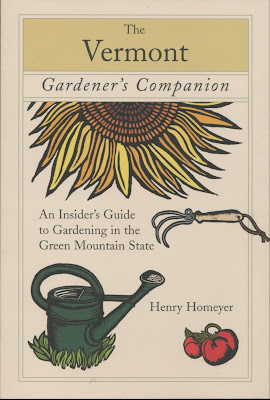What a treat it was to have Henry Homeyer at the Davies Memorial Library on Saturday evening May 21. The UNH Master Gardener is familiar to many through his Vermont Public Radio commentaries and his newspaper columns (which can be read at www.dailyUV.com/henryhomeyer). For Waterford's eager audience (a full library!), he brought a special new presentation: "Great flowers that attract and feed butterflies and native pollinators." Starting, of course, with the butterfly bush, but including an hour of diverse and sometimes surprising candidates, in full color.
People wrote notes all through this engaging talk -- names and habits of plants that butterflies and other pollinators adore, and quick sharp comments on which plants live up to their reputations and which ones don't (like a variety called "endless summer" by the plant merchant but that Mr. Homeyer called "endless disappointment"). Questions flew at the end of the talk -- how to make hollyhocks happy, whether lavender would overwinter in our area (zone 4), which forsythias bloom after a northern Vermont winter, soil testing, rosechafers, and more.
One of the last questions was from Jen, our amazing librarian, who has an invasive plant taking over her stone wall. At Mr. Homemeyer's urging, she zipped home to pull a handful. The garden pro looked at the greenery, grimly. "Goutweed," he pronounced. "Sell the house."
That's the only bit of advice I hope won't be followed from the evening!
Watch for the July program in this series, on "land management for wildlife." And oh yes, there was a question about woodchucks ... right after the one about mice in a walled garden. Don't you wish you'd heard the answers? Maybe you'll want to check out some of Henry Homeyer's books this season.
 | |
| Fabulous flower cookies! |




